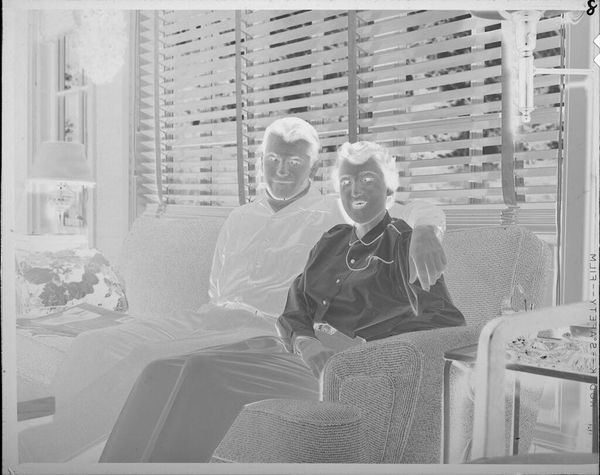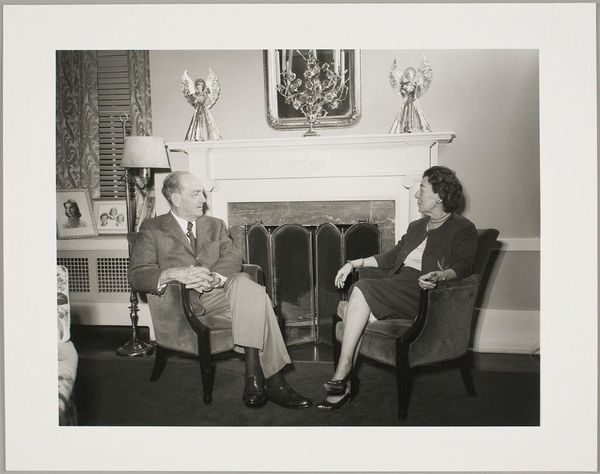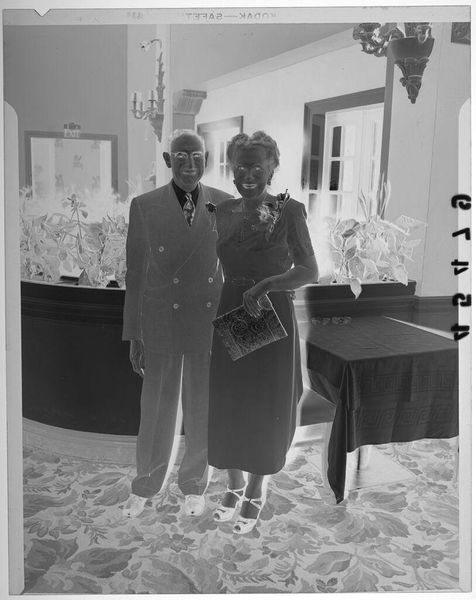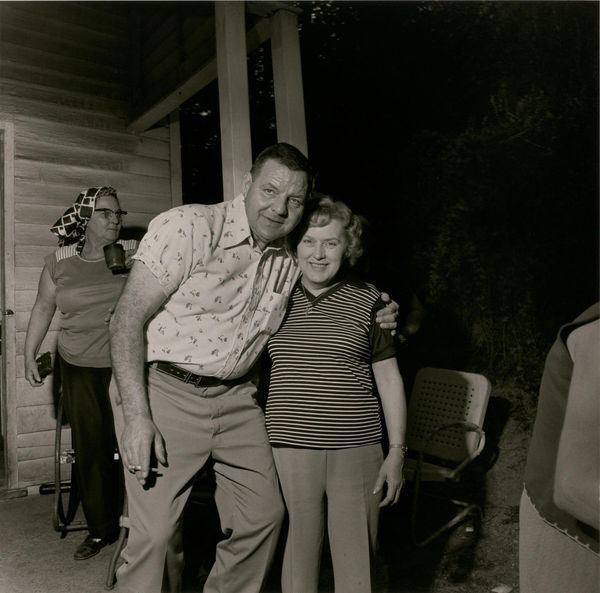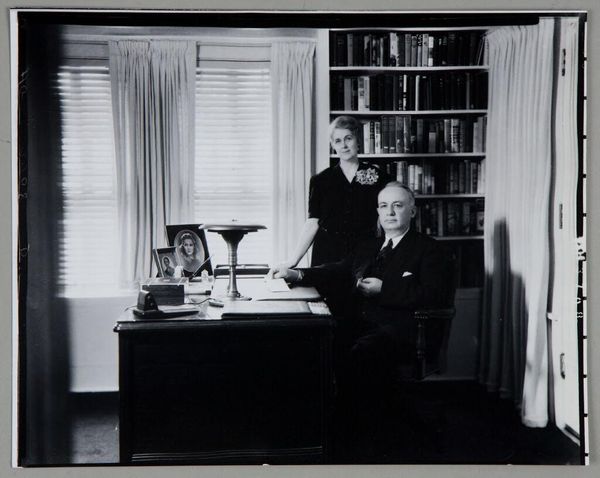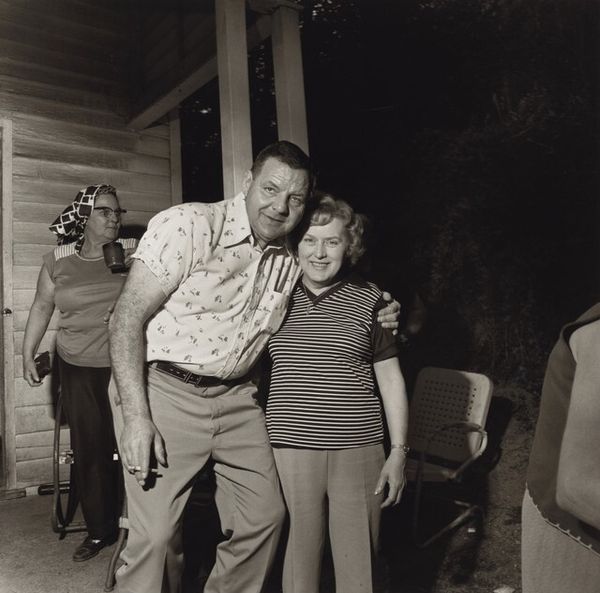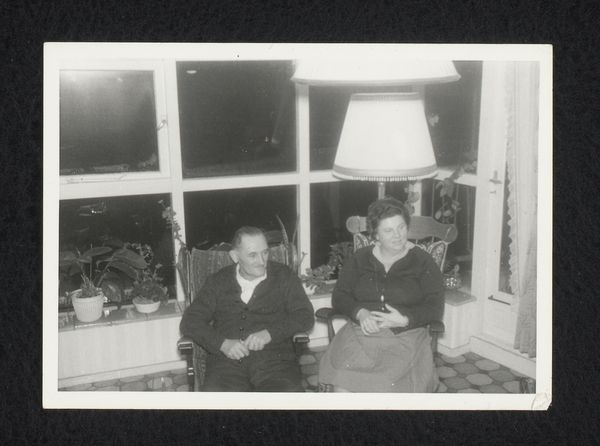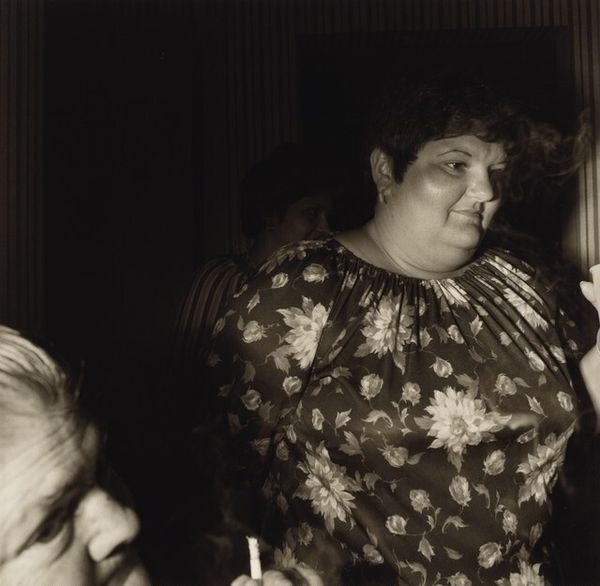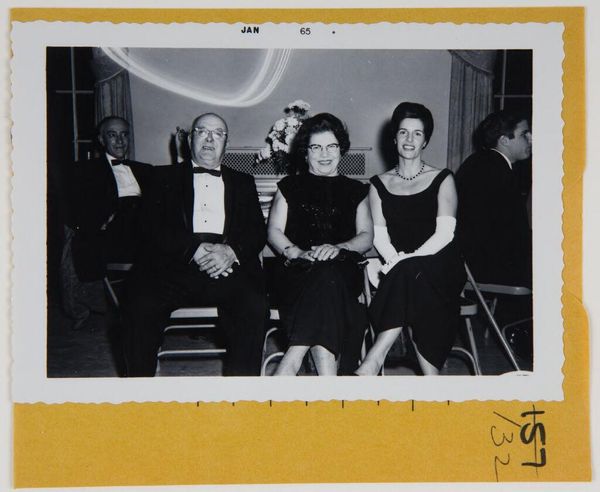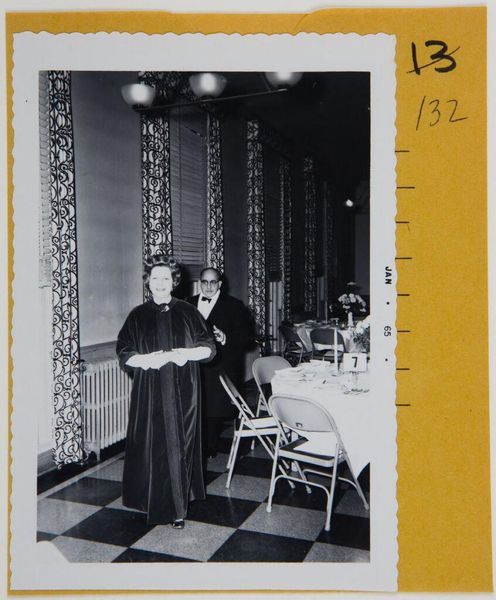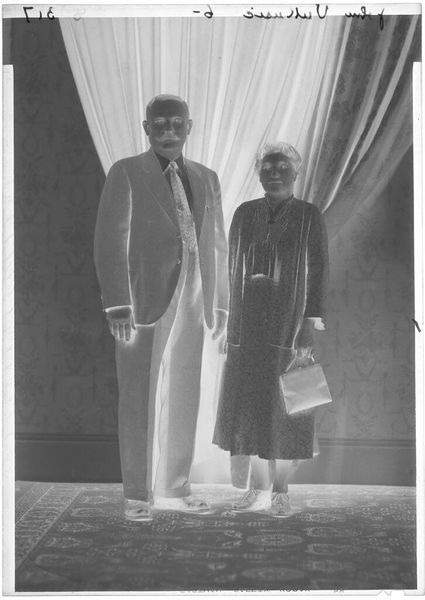
Retiree with his Wife, Atlas Steel Casting (Working People series) 1978
0:00
0:00
photography, gelatin-silver-print
#
portrait
#
black and white photography
#
photography
#
historical photography
#
black and white
#
gelatin-silver-print
#
monochrome photography
#
genre-painting
#
modernism
#
realism
Dimensions: image: 17.7 x 16.4 cm (6 15/16 x 6 7/16 in.) sheet: 25.3 x 20.3 cm (9 15/16 x 8 in.)
Copyright: National Gallery of Art: CC0 1.0
Editor: This gelatin-silver print by Milton Rogovin, titled "Retiree with his Wife, Atlas Steel Casting (Working People series)," was created in 1978. It's a formal, almost stoic portrait. What strikes me most is the quiet dignity emanating from this couple amidst the ordinariness of their home. How do you interpret this work, seeing it within the context of its time and Rogovin’s broader project? Curator: This image is powerful precisely because of what you’ve noticed – the dignity. Rogovin's "Working People" series is vital. It resists the erasure of the working class in art history, documenting the humanity of those often rendered invisible. It's not just a portrait; it’s an intervention. Consider the title - ‘Atlas Steel Casting’. Knowing the husband’s profession anchors the image in the realities of labor. How does the black and white medium affect your reading of the image? Editor: I think it strips away any distractions and focuses attention on their faces and the textures of their clothing and furniture. It feels very direct and honest, almost like a social document. Curator: Exactly! The choice to use black and white underscores a commitment to realism, aligning Rogovin with a tradition of documentary photography concerned with social justice. Furthermore, it monumentalizes the subjects. What could be read as an objective rendering also frames these workers as figures of resilience in the face of systemic inequalities. Do you see any visual clues to the couple's identity beyond their clothing? Editor: I suppose the decorative objects on the mantelpiece, the patterned furniture and rug give you a glimpse into their personalities and tastes; there's a sense of pride in their home. They may be workers, but they have full, complex lives. Curator: Precisely. It is a document that speaks volumes about class, labor, and the quiet heroism of everyday life. Rogovin compels us to look, to acknowledge, and to remember the people who built our world, one steel casting at a time. Editor: That gives me a much deeper appreciation for the image. It's not just a portrait, it's a statement about class and representation. Curator: Agreed! Hopefully this perspective gives us all something to consider.
Comments
No comments
Be the first to comment and join the conversation on the ultimate creative platform.

